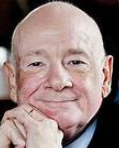Greg Taylor writes: Near-death experiences (NDEs) first gained widespread public attention in 1975, with the release of Raymond Moody’s bestselling book Life After Life. In that book, he described many of the elements reported during an NDE with the following idealized example (most NDEs will not include every single aspect):
A man is dying and, as he reaches the point of greatest physical distress, he hears himself pronounced dead by his doctor. He begins to hear an uncomfortable noise, a loud ringing or buzzing, and at the same time feels himself moving very rapidly through a long dark tunnel. After this, he suddenly finds himself outside of his own physical body, but still in the immediate physical environment, and he sees his own body from a distance, as though he is a spectator. He watches the resuscitation attempt from this unusual vantage point and is in a state of emotional upheaval.
...Soon other things begin to happen. Others come to meet and to help him. He glimpses the spirits of relatives and friends who have already died, and a loving warm spirit of a kind he has never encountered before – a being of light – appears before him. This being asks him a question, nonverbally, to make him evaluate his life and helps him along by showing him a panoramic, instantaneous playback of the major events in his life. At some point he finds himself approaching some sort of barrier or border, apparently representing the limit between earthly life and the next life. Yet he finds that he must go back to the earth, that the time of his death has not yet come. At this point he resists, for by now he is taken up with his experiences in the afterlife and does not want to return. He is overwhelmed by intense feelings of joy, love and peace. Despite his attitude, though, he somehow reunites with his physical body and lives.
...the experience affects his life profoundly, especially his views about death and its relationship to life.
Researchers estimate that 10-20% of people who come close to death report NDEs, and they have been recorded throughout history and across cultures worldwide. And while interpretations of the experience vary, the core elements remain the same. For instance, some 2000 years ago the Roman historian Plutarch mentioned the experience of one Aridaeus of Soli, who “fell from a certain height upon the nape of his neck and died...he was carried away to be buried when he came back to himself and rapidly recovered.” Aridaeus told how, having ‘died’, he felt his spirit body exiting his physical body through his head, after which he had an out-of-body experience (OBE). His sense of vision when in this new ‘spirit body’ was augmented – sharper, and strangely capable of viewing “around in all directions at once” – and he could now “move in all directions easily and quickly.” A deceased relative who had died at a young age then appeared before him, showing Aridaeus the inner workings of the afterlife realms. Upon reviving from death, Aridaeus transformed himself, becoming purer of heart and helpful in his community.
Despite occurring two millennia in the past, the story of
Aridaeus could be lifted straight from Moody’s Life After Life. In fact,
it even contains aspects that were not mentioned by Moody, but have since been
found in multiple modern NDE reports. For example, Aridaeus spoke of being able
to see “in all directions at once”; a recent account describes it in those
exact words: “I could see in three dimensions...I could see all directions at
once.” Another modern NDE explicitly notes “I could see 360 degrees
around me at the same time.”
Greg Taylor, “What is the Best Available Evidence for the Survival of Human Consciousness after Permanent Bodily Death?” An essay written for the Bigelow contest addressing this question. I am presenting excerpts without references, but this essay is available with footnotes and a bibliography at https://bigelowinstitute.org/contest_winners3.php.





No comments:
Post a Comment